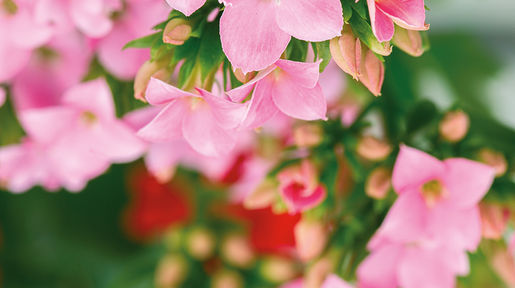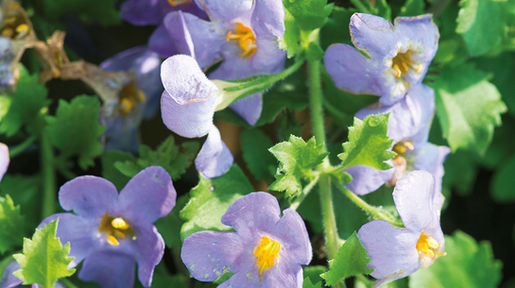Outdoor Areas
SEARCH BY CATEGORIES
May 10, 2020 – Published in Design & Decor Spring 2014 issue
The long and the short of planting flowers
Words: Andrea Christians
Photography: Alan Carville
We have all tried our hand at it. We purchase seeds, plonk them in some soil, water them and imagine that in a few weeks' time, we shall have blooms as lovely as those shown on the packet. A few weeks pass and nothing happens. Alternatively, we decide to skip the seeds and go for potted plants that we transfer directly into our front garden. After a few days the plants start dwindling and within a few weeks, we wonder why we have a bloom-less plant sitting in our garden.
It takes time and a lot of effort to make things happen in a garden, until you ask expert advice and really, really listen to it with eyes wide open. Being one of the many who has unsuccessfully tried to keep blooming plants alive, let alone blooming in my garden, I drive up to Burmarrad and the nursery at Green Supplier Ltd to meet Louis Micallef and ask some questions. With a family tradition of green fingers, Louis has plenty of years' experience in the gardening profession.
"Why don't seeds always germinate the way we expect them to?"
Louis says, "Seeds are very delicate things. First of all, it is advisable to purchase 'new' seeds which belong to plants which have just shed them. Seeds which have been in their pack for more than one season, and beyond five months since they were packed, will struggle terribly to germinate. Even though most seed packets carry 'best before' dates, one should take note of when they were packed to see how their germination will probably fare. Once the five month period has elapsed, germination success rates drop drastically and this causes a no show of growth plus a lot of demoralisation! We take care to always germinate our plants from fresh seeds for maximum benefit. Yet even then, we have to keep temperatures constant 24 hours a day, we have to use the right kind of compost/soil/sand mixture and we have to watch over the newly germinated plantlets as if they were newborn babies."
"Therefore, few people bother to germinate plants from seeds – am I right?"
Louis says, "Yes, very much so. Today most people want a ready grown plant that can be enjoyed from the minute it is purchased. Seeds are generally purchased by seasoned gardeners with lots of time and patience on their hands."
"Which are the typical plants one can find in bloom in springtime?"
Louis says: "There are the seasonals like the Pansy and Petunia. People can buy these potted when they are still very small and plant them directly on site. The Pansy comes in small and large blooms in several different colours and variegations. There are variations of the Petunia, which can be grown in hanging baskets or planted in the ground for a bushy plant.
The Petunia comes in a huge variety of colours and if it is planted during early spring you can expect to have flowers by May or June. It can be kept constantly flowering all through the summer but it will need a lot of regular watering. The Petunia may flower up to September and stretch into October or November, depending on the weather, and if it is placed in a half-sun position. Remember that these are seasonal plants with a short life and a very fast growth process.
Therefore water is what they thrive on. This plant should generally last for one season and then once it loses its flowers, be uprooted. However if you leave the plant in the soil until the dry flowers form an shed their seed, you might be lucky enough to have the plant sprouting again next year."
"Are there any alternatives to these flowers?"
Louis says, "Yes there are, and all suitable for our climate - there is the Lobelia which comes in blue, white and lilac and is a lovely plant. Then there is a variant of the Petunia, and this is the Calibrachoa. This comes in several beautiful colours – red, yellow, pink, white, orange… When planting in the soil remember that a variety of colour is always very beautiful."
"How does one prepare the soil for optimum results and to avoid damage?"
Louis says: "Whichever plant one chooses, plants should be spaced out when transplanted in the soil. Therefore each plant should be about 30 cm away from its neighbour, so as to have space to grow. Before planting, it is advisable to work or till the soil and include some new compost. A universal compost is generally the best balanced mix. Many people complain about the presence of cats in their garden, much to the detriment of plants since cat urine is particularly harmful for plants. Repellent gels do exist and can be used around plants to keep cats away. However many people swear by a simpler method – that of sprinkling black pepper. around the plants."
"Many exotically named new flowering plants have been put on the local market over recent years. Which are the easiest to grow for our climate?"
Louis says, "First of all it is important to point out that here at the nursery we get plants specifically targeting a Mediterranean climate. The plants which bloom in spring in the Mediterranean are the very same ones which bloom in spring up in the north where our suppliers are found. And yes indeed there are many exotic names for plants. As spring approaches summer, one can start removing the dead and dying plants such as the Lobelia and the Pansy, and replace them with the Vinca or the Sun Jewels. One plant which is becoming increasingly popular and which belongs to the family of the daisy, is the Dimorfoteca. This is available in a bushy or trailing format and if it is planted before May, it could last and thrive all year, given the right circumstances. One plant which is also good for trailing up a trellis or for keeping as a bush, is the Dipladenia, but it will need to be supported up the trellis. A new inclusion in our nursery is the Bacopa with its white, lilac or pink flowers. It is a semitrailing plant and really very attractive. Whichever plant one chooses, it takes just a little extra attention and care on our part and the plants happily reward us with colour and flowers all through the season."
Contact Louis Micallef at Green Supplier Ltd, Flower & Plants Growers, Mdawra Road, Burmarrad. Enquiries: 2157 1428


More Posts
- 91Page 1














